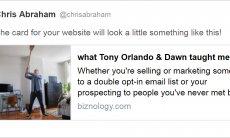The negative perceptions of the major U.S. airline brands (e.g. American, United, Delta, US Airways) reached a new high recently with publicity on the interminable security lines at most airports. While these excessive wait times have many causes, such as not enough checkers and increased air traffic, the airline industry is partly to blame as well. Their individual charges for checked baggage have encouraged more people to drag their belongings through security, clogging X-ray lines and squeezing them into overhead compartments. Today, 62% of leisure travelers bring their bags onboard instead of checking them. This contributes to the overall wait times of over two hours at many airports, and has created an intense customer frustration that is having an alarming impact on the brand image of these airlines.
Good customer service is crucial for successful branding in any business, and has always been a hallmark feature for airline carriers. Passengers crave in-flight comfort, convenience, less stress, and decent food, all essential ingredients for a worthwhile experience and establishing an emotional bond with an airline brand. However, their overall reputation for service is rather poor, with customer satisfaction scores lower than most other industries. Southwest Airlines, which does not charge a fee for checked baggage, is rated number one in customer service (67% – source: 2016 Temkin Experience Ratings), followed by Alaska Airlines and JetBlue, both at 62%. But the larger, traditional airline carriers are at the bottom of the list: Delta (59%), American (52%), United (51%) and US Airways (48%).
The biggest complaint about any in-flight experience is the lack of seat comfort. Last month, Senator Chuck Schumer introduced an amendment to a bill that would have imposed a moratorium on reductions in seat size and the space between rows. However, the airline industry is powerful, and the bill failed, 54 to 42 along party lines (Susan Collins of Maine was the only Republican supporting it).
The airlines introduced this extra baggage fee of $25 in 2008 when oil prices skyrocketed and their profits declined. This initiative became the first step for a new business model, an unbundled or a la carte pricing structure (the fees have gone up by about two-thirds since). Depending on the airline, there could be as many as 35 add-ons to the base price. In addition to the checked baggage, the most common charges are for meals and/or snacks, canceling a reservation, booking by phone, sitting in a minimally more comfortable seat, flight delay insurance, keeping the middle seat empty, and even requesting a pillow.
The result of this a la carte structure has been a huge surge in profits for the airline industry – $26 billion after taxes in 2015 versus $2.3 billion in 2010. Baggage fees alone contributed $3.8 billion of this profit (Delta took in $875 million on baggage fees last year). This unbundled strategy also enables airlines to establish a low base price to lure passengers in, and then “tricks them” into paying more for features traditionally provided for free.
While this piecemeal business model has been a financial success, “nickel and diming” passengers is having a negative impact on their experience and certainly eroding the trust in these big airline brands. The key to sustaining a strong brand is to assure that your customer feels satisfied and comfortable, which means delivering on brand promises for their actual in-flight experience. Passengers have always wanted and even expected good value and service, but in recent years this unbundled business model has created more of a “transaction based” experience – i.e., each aspect of their flight must now be purchased individually, instead of enjoying a simple, user friendly package of essential services.
This situation presents a dilemma for the airline industry. Do they continue this a la carte pricing structure, which many airline managers still believe offers passengers the benefit of flexibility and choice, or do they recognize and adjust to the growing exasperation and negative perceptions that this penny pinching model has caused. Related to this is the question of whether their brand image will be permanently undermined by their obsession with excessive profits, at the sacrifice of many of the key elements of optimal customer service.
Perhaps the adverse publicity over the horrendous wait lines at airports will become the “tipping point” for airlines to reconsider whether it’s time to change their a la carte business model to a bundled service that is more customer friendly, the basis for smart branding.





